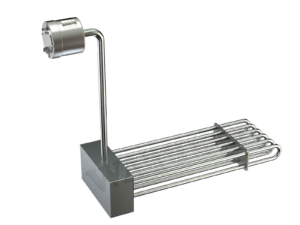Immersion Heaters and the Oil Pipeline Industry
Last updated on December 30th, 2024 at 11:30 am
North America is starting to see a growing need for oil pipelines. The Keystone XL project, which will transport oil sands from Canada and the northern United States down to the Gulf Coast to refineries, is a $5.3 billion project that is expected to transport hundreds of thousands of barrels of oil each day.
As more pipeline projects are started, the demand for effective equipment that makes the pipeline process more efficient and effective becomes detrimental.
Any effective pipeline project requires the use of immersion heaters, such as circulation or inline heaters and flanged heaters. Immersion heaters are much like the name implies; they are immersed inside a device, such as a tank or container, to heat the liquid.
In the pipeline, the heaters are used to change oil viscosity and thus, allow the oil to flow more freely and rapidly through the pipeline to its destination. Immersion heaters can be installed in three different ways. Circulation heaters incorporate the use of immersion heaters in multiple applications, using a pump that pushes the liquid, which is oil in this instance, through the pipe circuit that is heated.
These heaters come in various wattage densities, with that wattage design being influenced by the particular liquid that is being heated by the device. The flow rate impacts the wattage that is required to heat the oil. Entering through an inlet, the oil will be heated as it flows within the chamber then exits the nozzle or outlet where it then circulates throughout the piping.
Immersion Heater Installation
 An over-the-side installation is used in instances where the immersion heaters cannot be installed readily through the side. Placed through the top of the device where the heater should be installed, the heated segment of the unit is either placed on the bottom of the device or on the side. This enables an even distribution of the liquid because the circulation occurs naturally.
An over-the-side installation is used in instances where the immersion heaters cannot be installed readily through the side. Placed through the top of the device where the heater should be installed, the heated segment of the unit is either placed on the bottom of the device or on the side. This enables an even distribution of the liquid because the circulation occurs naturally.
Hairpin tubular elements, which are bent, are then welded into a flange create the flange heater. These heaters are given wiring boxes, which contain the electrical connections. The flanged heater is attached by being bolted onto a matching flange, which has been welded onto a tank wall or nozzle.
The screw plug design heater is also made of hairpin elements that are bent, but these elements are welded into a screw plug then provided with electrical connections in wiring boxes.
These heaters are directly screwed into the tank’s threaded opening in its wall or placed through matching pipe coupling. With these particular heaters, the oil will enter the inlet at a cool temperature, which means it will be moving slowly, almost seeping. As it exits the outlet, it will be heated and flowing more readily as it travels toward the end of the transport pipe. The heaters also help maintain speedier flow of the oil in the colder weather when it would be slowed even more.
Without the use of immersion heaters, the oil transport time would be significantly longer and thus the process would be much more time-consuming and more expensive.
